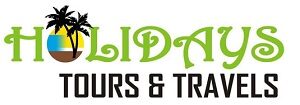
Wild camping: the essential guide to prepare for your trip
Waking up in the splendor of nature and discovering solitude far from the cities , this is what pushes the traveler to practice wild camping . While this sounds very romantic, however, there are rules you need to follow to keep your adventure safe and rewarding, while respecting these unique places, for the wildlife and for those who will follow you.
-
Prepare your excursion carefully
Whether it’s your first experience or your hundredth, preparing well is imperative as there is a lot going to happen in the great outdoors – it happens a lot. The weather can change suddenly, trails become impassable, rivers swell, other travelers may have settled in before you at your preferred campsite … So always plan your trip well in advance.Grab a good map to plan a route that’s within your reach, and rather double check its feasibility, with the information center of the national park that you are going to discover or with a local hiking association, when possible. Estimate the length of your excursion – better to be too careful rather than aiming for a marathon pace – and identify two or three places where it will be possible to camp EireTrip Travel Blog
-
Camp where permitted
Also called “free camping” or “free camping”, wild camping has a slightly different meaning depending on your destination : in some countries, it means pitching your tent in places created on purpose, but with basic facilities; in others, it means freely choosing one’s location within a vast natural expanse.
Laws on wild camping also vary by country, state and even region. In England and Wales it is quite tightly regulated as most of the land is privately owned, but there are still areas where it is allowed, mainly national parks. Wild camping is legal in Scotland , and tolerated in Ireland, under certain conditions.
-
What to pack
While escaping civilization is part of the allure of wild camping, it also means being completely self-sufficient . Chances are the nearest store is miles away, and you’ll need to pack everything you need, including enough food. Always pack something to last an extra night in case of an emergency.
-
Beware of bad weather
Bad weather can prevent you from reaching your wilderness camping spot. Find out beforehand by checking local weather reports, and learn to read the sky when you are on the way , especially if you are going to high passes or summits.
-
Make yourself comfortable
Try to pitch your tent on draining ground, high up, far enough from the edges of watercourses. You might as well examine the area to see if anything could damage your tent. Trees may seem perfect for sheltering you from the elements, but beware of branches that could break in high winds: camp far enough away. Also be careful in areas where rocks are likely to fall.
Camp discreetly , taking care to set up far from roads or buildings, out of sight of paths and roads. Rainforests may sound like a good idea, but they often attract flies and mosquitoes.
When you’ve chosen your spot, always pitch your tent securely, and tie its guy lines to rocks or trees if the ground is too hard.
-
Find water
Water is essential on any wilderness camping trip: think about where you will find it, and make sure it is safe to drink . Your map or guide should point out the available water points, whether it is a tap in the toilet or a natural stream, river or stream.
-
Watch out for fire
Forest fires are a real danger in dry regions, and camping is prohibited in many places for this reason. Observe all fire restrictions . Where camping is permitted, follow all rules, whether they recommend using fire pits, fireplaces, or burning only dead wood from permitted sources.
Do not build a large fire where a small one would suffice, and make sure it is really extinguished by flooding the ashes with water or covering them with earth or sand. Make sure the ashes are cold before you go.
-
Watch out for wildlife
Encountering wild animals is always a highlight of a camping trip, but some are less welcome than others. Learn about the local wildlife and the risks it can pose. Be sure to follow the rules of interacting
-
Prepare for emergencies
Never leave without telling someone about your plans and the approximate time of your return; if something goes wrong, that person can raise the alarm. Before leaving, check that your first aid kit is not out of date. For short trips, take dressings and painkillers at a minimum. For longer ones, provide bandages, sterile compresses, antiseptic and rehydration products. Try to find a place for a survival bag or blanket. A whistle is useful in order to attract attention. At the starting points of the most frequented hikes, it is often possible to hire personal locator beacons (BLP), which will alert the emergency services in the event of a serious problem.
-
Leave only footprints
There’s a reason why national parks and reserves around the world offer wilderness campsites for adventure seekers – it’s because they allow you to enjoy the natural landscapes while taking charge of your impact. on the environment . When you pitch your tent in the middle of nature on a site not intended for this purpose, it is you, and you alone, who are responsible for leaving it as you found it. Bury your droppings at least 20 cm deep and more than 60 m from any water source, and take your toilet paper (in a resealable plastic bag for example). Take back all your waste, build a fire in moderation and leave absolutely no trace of your visit, so that others can enjoy it as well.


